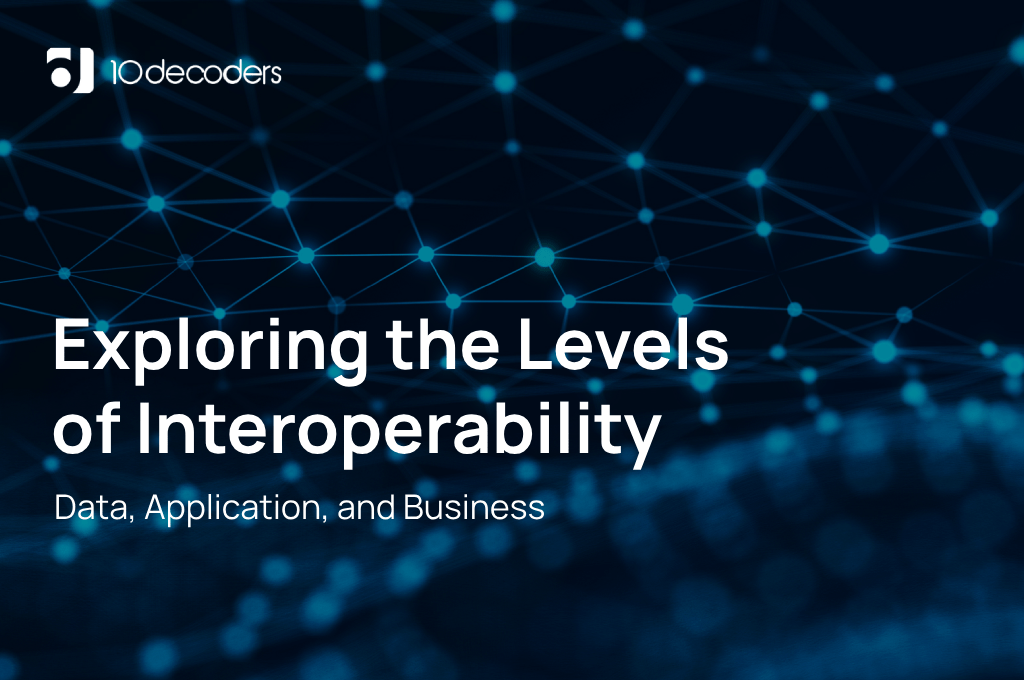Exploring the Levels of Interoperability: Data, Application, and Business
In the intricate world of healthcare, seamless information exchange is no longer a luxury, but a necessity. Siloed data, incompatible systems, and fragmented processes all act as roadblocks to efficient patient care, hindering collaboration and impacting outcomes. The answer lies in interoperability, the ability of diverse systems and platforms to share and interpret data meaningfully. But interoperability isn’t a monolithic concept; it exists on a spectrum, with distinct levels impacting different aspects of healthcare delivery.
Level 1: Data Interoperability - Laying the Foundation
The journey begins with data, the lifeblood of healthcare. At this level, interoperability ensures that data can be exchanged accurately and consistently between systems. This involves:
- Standardised formats: Data adheres to agreed-upon formats like HL7 or FHIR, ensuring computers understand the meaning and context of each element.
- Common vocabularies: Consistent terminology eliminates ambiguity and enables accurate interpretation. SNOMED CT and LOINC are examples of such vocabularies.
- Data exchange protocols: Secure and reliable methods such as APIs facilitate seamless data transfer between diverse platforms.
Achieving data interoperability paves the way for better decision-making at the individual patient level. Clinicians can access a holistic view of a patient’s medical history, medications, and lab results from different providers, leading to more informed diagnosis and treatment plans.
Level 2: Application Interoperability - Building Bridges Between Systems
Moving beyond data exchange, application interoperability allows systems to interact and collaborate. This means:
- Integration capabilities: Applications can “talk” to each other, sharing data and triggering workflows in real-time. For example, an Electronic Medical Record (EMR) might automatically update a pharmacy system when a medication order is changed.
- Open APIs: Applications expose their functionalities through standardised APIs, enabling other systems to leverage their capabilities.
- Interoperability middleware: Software solutions act as translators, facilitating communication between systems that employ different technologies.
With application interoperability, healthcare becomes interconnected. Clinical decision support systems can analyse data from multiple sources, generating real-time insights for improved care delivery. Public health officials can access aggregated data for disease surveillance and outbreak management. The possibilities for improved efficiency and collaboration are endless.
Level 3: Business/Process Interoperability - Aligning Strategies for Optimal Care
The highest level of interoperability extends beyond technology, aligning business processes and workflows across organisations. This requires:
- Standardised care pathways: Consistent protocols for managing specific conditions ensure coordinated care delivery across different providers.
- Shared goals and metrics: Organisations agree on common goals and collaborate on measuring progress towards them.
- Collaborative partnerships: Healthcare stakeholders foster trust and open communication to overcome organisational boundaries.
At this level, interoperability becomes a strategic game-changer. Healthcare systems can optimise resource allocation, reduce redundancies, and improve population health outcomes. Data from diverse sources can be used to analyse trends, predict future needs, and personalise care delivery.
The Journey to Seamless Healthcare Collaboration
Achieving interoperability across all three levels is a continuous journey, requiring a collaborative approach from all stakeholders:
- Policymakers: Creating regulations and standards that promote interoperability practices.
- Technology providers: Developing open, interoperable systems and solutions.
- Healthcare organisations: Investing in technology and training personnel to utilise interoperable systems effectively.
- Clinicians and patients: Advocating for seamless data exchange and collaboration to improve care delivery.
The benefits of interoperability are multifold: enhanced patient care, improved outcomes, increased efficiency, and reduced costs. As we move towards a more integrated healthcare landscape, embracing interoperability at all levels becomes not just an option, but a necessity for building a future where seamless collaboration becomes the norm.
Ready to take the next step?
Start by identifying your current level of interoperability, then focus on addressing specific challenges with targeted solutions. Remember, building an interoperable healthcare system is a marathon, not a sprint. By taking sustained and collaborative efforts, we can overcome the roadblocks and pave the way for a future where information flows freely, empowering healthcare professionals to deliver the best possible care to every patient.



